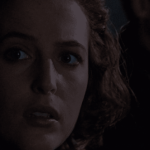 Music
Music  Music
Music  History
History 10 Less Than Jolly Events That Occurred on December 25
 Weird Stuff
Weird Stuff 10 Funny Ways That Researchers Overthink Christmas
 Politics
Politics 10 Political Scandals That Sent Crowds Into the Streets
 Weird Stuff
Weird Stuff Ten Bizarre Facts About The Doge Meme
 Our World
Our World 10 Ways Your Christmas Tree Is More Lit Than You Think
 Movies and TV
Movies and TV The 10 Coolest Stars to Set Sail on The Love Boat
 History
History 10 Things You Didn’t Know About the American National Anthem
 Technology
Technology Top 10 Everyday Tech Buzzwords That Hide a Darker Past
 Humans
Humans 10 Everyday Human Behaviors That Are Actually Survival Instincts
 Music
Music 10 Surprising Origin Stories of Your Favorite Holiday Songs
 History
History 10 Less Than Jolly Events That Occurred on December 25
 Weird Stuff
Weird Stuff 10 Funny Ways That Researchers Overthink Christmas
Who's Behind Listverse?

Jamie Frater
Head Editor
Jamie founded Listverse due to an insatiable desire to share fascinating, obscure, and bizarre facts. He has been a guest speaker on numerous national radio and television stations and is a five time published author.
More About Us Politics
Politics 10 Political Scandals That Sent Crowds Into the Streets
 Weird Stuff
Weird Stuff Ten Bizarre Facts About The Doge Meme
 Our World
Our World 10 Ways Your Christmas Tree Is More Lit Than You Think
 Movies and TV
Movies and TV The 10 Coolest Stars to Set Sail on The Love Boat
 History
History 10 Things You Didn’t Know About the American National Anthem
 Technology
Technology Top 10 Everyday Tech Buzzwords That Hide a Darker Past
 Humans
Humans 10 Everyday Human Behaviors That Are Actually Survival Instincts
10 Things You Might Not Know about Dracula
Count Dracula is, without a doubt, the most famous vampire in the world. The bloodsucker first burst onto the scene in Bram Stoker’s 1897 novel Dracula and has since appeared in hundreds of films and TV shows. Thanks to his ubiquity, most people know the basic facts about Dracula: he lives in a castle in Transylvania, he can turn into a bat, and he’s hunted by Abraham Van Helsing. But here are 10 interesting things you might not know about the notorious vampire.
Related: 10 Best Monsters That Terrified Movie Goers
10 The First Adaptation Appeared Before the Novel Had Even Been Published
On May 18, 1897—eight days before the publication of Dracula—Stoker put on an adaptation of the novel at the Lyceum Theatre in London, where he worked as a business manager. The author did this not because he was particularly eager to see his words come to life but because he wanted to own the copyright for stage adaptations. At the time, the Stage Licensing Act of 1737 and the Theatres Act of 1843 meant that a play had to be publicly performed before the rights could officially be assigned.
The script of the play was hastily repurposed from the text of the novel, with scene-setting descriptions chopped out and exposition inelegantly turned into dialogue. The entire play took around six hours to perform, and there were only two paying customers (which isn’t surprising considering adverts were only put up half an hour before the play started).
Stoker’s boss, actor and manager Henry Irving, allegedly summed up his opinion of the play in just one word: “Dreadful.”[1]
9 Nosferatu (1922) Was Almost Destroyed
F. W. Murnau’s silent German film Nosferatu: A Symphony of Horror is one of the earliest adaptations of Dracula. However, Murnau didn’t actually get legal permission to make the film, so he changed a few details in an attempt to avoid copyright infringement, such as calling the vampire Count Orlok.
Stoker died in 1912, but when his widow, Florence, found out about Nosferatu, she sued Prana Film and—due to the film’s blatant retelling of Dracula—won. The studio was bankrupt, though, so they couldn’t pay the financial settlement, leading Florence to demand that every copy of the film be destroyed. However, a few copies slipped through the cracks, and the film—which is now considered a horror classic—survived.[2]
8 Lack of Copyright Enabled Dracula’s Proliferation and Popularity
After winning the legal battle against Prana, Florence decided to set up a film deal for Dracula with Columbia Pictures. However, it was then revealed that while Bram had applied for copyright in the United States, he hadn’t actually dotted every “I” and crossed every “t.” The book, therefore, fell into the public domain, which, unfortunately for Florence and Stoker’s direct descendants, meant that not only did they have no say in what was made, but they also didn’t receive any U.S. royalties.
Although the lack of copyright was a loss for Stoker’s family, it was a massive win for filmmakers, who went wild making adaptations. Had Dracula not starred in so many films, he likely wouldn’t have reached such heights of popularity. According to the Guinness World Records, Dracula is even the most portrayed literary character in films and on TV.[3]
7 There Have Been Many Weird Adaptations of the Novel
Considering Dracula has appeared in literally hundreds of films, it’s no surprise that some of his appearances have left a little—or, rather, a lot—to be desired. For instance, Billy the Kid Versus Dracula (1966) does exactly what the title suggests, although not particularly well. The horror icon and the legendary Western outlaw face off against each other when Dracula sets his sights on Billy’s girlfriend.
A couple of other strange Dracula films include Dracula’s Dog (1977) and Dracula 3000 (2004). The former, which is also known as Zoltan… Hound of Dracula, follows the adventures of a Doberman Pinscher called Zoltan, who was turned into a vampire by Dracula. Dracula 3000 is set in the year 3000 and follows Captain Van Helsing aboard a spaceship version of the Demeter, which is currently inhabited by Count Orlock (in a nod to Nosferatu).[4]
6 Dracula Probably Wasn’t Based on Vlad the Impaler
Vlad the Impaler is usually identified as the inspiration for Dracula, but the ruthless Transylvanian prince doesn’t actually pop up anywhere in the extensive notes that Stoker made for the novel. Although that doesn’t rule Vlad out as a possibility, he’s definitely not a certainty.
Some scholars have noted the similarities between Dracula and Stoker’s boss, Henry Irving. Stoker was captivated by Irving’s theatrical talent despite his egotistical personality. These characteristics apply to Dracula, and the physical description of the vampire—an aquiline nose, bushy brows, and domed forehead—also match Irving.
Another possibility is that Dracula was inspired by Hungarian Countess Elizabeth Báthory, who, according to legend, murdered young women so that she could bathe in their blood and gain their youthfulness. Others have linked Dracula’s murderous streak to Jack the Ripper, while some people have traced his sexual transgressions to Oscar Wilde.
None of these inspirations have been definitively proven, and the character may just as easily have come from Stoker’s own imagination. According to Stoker’s biographer Harry Ludlam, the novel sprang from a nightmare the author had of “a vampire king rising from the tomb to go about his ghastly business.”[5]
5 Dracula’s Castle Likely Wasn’t Based on Bran Castle in Transylvania
If you type “Dracula’s Castle” into Google, all of the top results are about Bran Castle in Transylvania. However, there’s no evidence that Bram Stoker even knew about this castle. That hasn’t stopped Bran Castle from making the most of its claim to Dracula frame, of course, with its official website stating that Stoker may have been inspired by an illustration in Charles Boner’s Transylvania: Its Product and Its People (1865).
A far more likely castle candidate for Stoker’s inspiration is Slains Castle in Scotland. Stoker visited Aberdeenshire many times while writing Dracula, with his wife reporting that he “seemed to get obsessed by the spirit of the thing” and “would sit for hours, like a great bat, perched on the rocks of the shore, or wander alone up and down the sand hills thinking it all out.” The couple once stayed in the Kilmarnock Arms, just a 15-minute walk from Slains Castle, which bears a striking resemblance to Stoker’s descriptions of Dracula’s lair—right down to the octagonal room in both buildings.[6]
4 Bela Lugosi Was Buried Wearing His Dracula Cape
Many famous actors have played Dracula—from Christopher Lee to Adam Sandler—but the most iconic performance of the vampire was given by Bela Lugosi in Universal’s 1931 adaptation, simply titled Dracula. Lugosi died on August 16, 1956, and it’s commonly reported that he asked to be buried wearing one of the long black capes that he had worn when playing Dracula (there were a few different versions of the cape).
While it is true that Lugosi was laid to rest wearing the garment, it wasn’t actually at his own request. “My mother and myself had him buried in one of his capes,” his son, Bela George Lugosi, said. “Not that he had ever expressed that wish, but we thought it would be appropriate.”
Lugosi Jr. kept another one of his father’s capes as a keepsake, and in 2011, he put it up for auction, with bids starting at $1.2 million, but it failed to sell. “The experience made us realize we didn’t want it in some collector’s closet for the world never to see,” Lugosi later said. In 2019, he donated it to the Academy Museum of Motion Pictures so that the iconic piece of movie history could be admired by fans.[7]
3 Count Dracula Was Originally Called Count Wampyr
In Stoker’s notes for the novel—early iterations of which were called “The Un-Dead” and “The Dead Un-Dead”—he originally called his villainous vampire “Count Wampyr,” a name that was unlikely to strike fear into the heart of any reader.
Stoker’s vampire got a new name thanks to a visit to a library in Whitby, the English seaside town where part of the novel is set. He read William Wilkinson’s An Account of the Principalities of Wallachia and Moldavia (1820) and came across the word “Dracula” as a description of a few Voivode (essentially military leaders). The book contained a footnote explaining that “Dracula in the Wallachian language means devil,” and he copied it into his own notes.
While Vlad the Impaler—who is commonly cited as an inspiration for Dracula—was a member of the House of Drăculești and is sometimes described as Voivode Dracula, that is likely a coincidence. Stoker’s notes indicate that he simply chose the name because of its devilish connotations.[8]
2 English & Spanish Film Versions Filmed on Same Set… at Same Time
The most famous adaptation of Dracula is Universal’s 1931 film, directed by Tod Browning and starring Bela Lugosi. But when the cast and crew were done for the day, another crew came in to shoot basically the same film, but in Spanish. Filming alternate language versions of films concurrently wasn’t uncommon in Hollywood at that time.
Each night, director George Melford would use the same sets to shoot Drácula, which starred Carlos Villarías as Conde Drácula. Melford’s Spanish version was shot in less time than Browning’s and was allocated a smaller budget, but it ended up being 29 minutes longer. It features more dialogue and more shots of Dracula’s castle. Melford was also able to watch Browning’s dailies and make improvements to the framing and lighting of his own shots.
It was thought that all prints of the Spanish film were lost after its initial release in Cuba, but a partially damaged copy was found in New Jersey in the 1970s. Then, in the 1990s, it was revealed that a fully intact copy was still in Cuba. Drácula has now been preserved in the U.S. Library of Congress’s National Film Registry.[9]
1 The Icelandic and Swedish Versions Differ from the Original English Novel
In 2017, it came to light that the Icelandic version of Dracula, Makt Myrkranna (Powers of Darkness), isn’t a faithful translation. Hans Corneel de Roos discovered that Valdimar Ásmundsson took some pretty big liberties when translating the book into Icelandic when it was first serialized in a Fjallkonan newspaper in 1900.
Roos writes that “the original novel can be tedious and meandering,” whereas “Powers of Darkness, by contrast, is written in a concise, punchy style; each scene adds to the progress of the plot.” The Icelandic version does away with long scenes of sentimentality and legal discussions. Instead, it injects more action and humor into the plot.
However, Rickard Berghorn discovered that the Icelandic version was actually based on the Swedish translation of the novel Mörkrets Makter, which was printed in Dagen newspaper in 1899. Whether Mörkrets Makter was merely the anonymous translator’s own spin on the tale or whether it was somehow based on early drafts of Stoker’s novel isn’t yet clear.[10]








